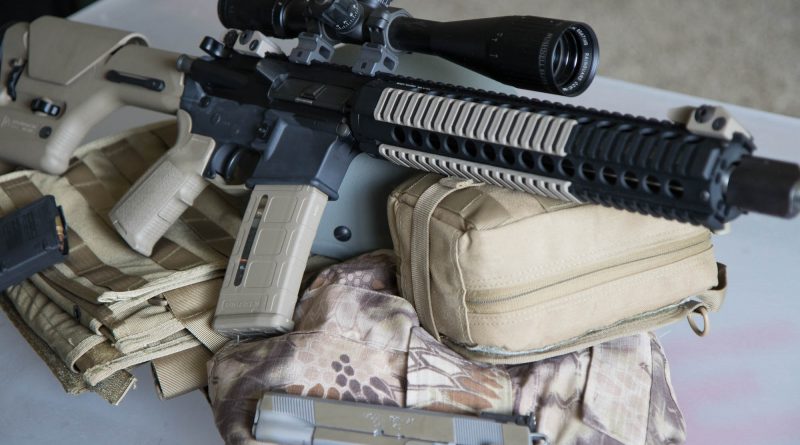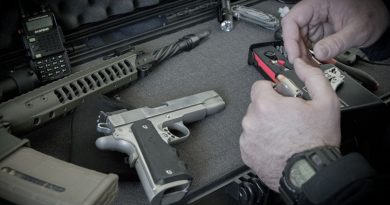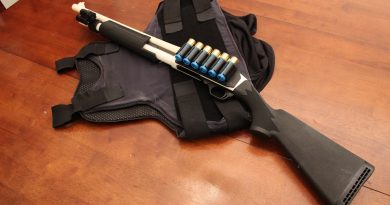Firearm Priorities
Starting at ZERO
I often encounter friends, family and acquaintances with the following quandary: “I’m thinking about getting a gun… what should I get?” The answer to this question is complicated, it is largely dependent on needs and desires. Typically folks want a gun at least to some degree for the preparedness aspect. There are some easy pitfalls to avoid and some important things to consider when moving toward a purchase. Firearms are expensive items for most people and the cost and hassle involved in the purchase is not taken lightly.
Mistakes to avoid
I once consulted with someone selecting a first firearm and the stated needs were. A defensive firearm with an effective cartridge that his easily handled, fired and will be used for home defense and potentially occasional concealed carry. The purchaser had no permit to carry and no immediate plans to obtain one so the concealed aspect was apparently only for future considerations. Because the firearm might be carried in the future, rifles and shotguns were immediately ruled out. I ended up recommending a mid to full size double stack semiautomatic 9mm pistol. This firearm type has good ammunition capacity, generally good ergonomics and trigger, acceptable accuracy and low recoil.
Later I found that the prospective gun owner had gone to a gun store with an inexperienced family member and selected a shiny stainless steel snub nosed .357 Magnum Five Shot Revolver. This firearm with it’s short sight radius, small grip, heavy trigger and small ammunition capacity was heavily weighted toward concealed carry and had much more limited potential as a home defense firearm. Turns out this individual likes revolvers, he loves the nostalgia and style. Getting a gun you like is great, but it shouldn’t be prioritized over getting a gun that meets your need. This user shoots the revolver on a limited basis and sticks with .38 special, avoiding the punishing .357 Magnum loads. He’s still looking for a home defense gun.
Another thing to remember is this: The guy at the gun store counter is an unknown quantity. I’ve met more than one person who has come home with a new gun and stated “It’s the same one the guy at the gun store carries.” We all have our biases and and it comes through in advice given, that being said the guy at the gun store could be a seasoned Retired Police Officer, or he could be some guy who learned all he knows from airsoft and call of duty.
First Thing’s First
The type of firearm most appropriate for you is going to depend on your needs. If concealed carry is a need then the firearm selected will have to be a handgun, plain and simple. A lot of folks will recommend a .22 long rifle as a first firearm every time. .22’s can be an excellent tool for training but their lack of power makes them a poor choice for a critical preparedness tool. So depending on your carry needs the clear choice is a centerfire pistol or rifle. If this is your only gun you will have to purchase adequate ammunition to practice and instruction from a qualified trainer is invaluable.
The Magazine Fed Semiautomatic Rifle
If we narrow the needs to general preparedness and not concealed carry: The semiautomatic magazine fed rifle is the best value for your money. Much good and evil is said of the AR15 rifle. It’s not the only choice but it has a lot of things going for it if you’re a law abiding suburbanite. Firearms have strengths and weaknesses. (I am often bemused by anti-gunner’s hatred of the handgun, a weapon that is exceedingly weighted toward defensive use. These same folks will laud a bolt action rifle as a good sporting gun, a weapon that has almost no defensive use and is particularly designed with the offensive goal of shooting an unsuspecting target from long range!)
The AR15 is not without these design particularities. When considering the AR15’s strengths it should be noted that the typical carbine AR is a very well rounded firearm. It’s compact size and semiautomatic action make it well suited for Close Quarters Home Defense. When we consider these features with it’s long range and accuracy it becomes clear that this firearm is also suited for neighborhood patrol in a situation without the rule of law. Particularly the AR15 has the logistical advantages of taking common .223 Remington and 5.56x45mm cartridges. It uses the ubiquitous STANAG magazine and parts are abundant. Armory work on the AR15 is simple and not out of reach for mechanically inclined individuals.
A Semiautomatic Sidearm
A firearm is a tool, and tools have different uses. A diversified toolbox lets the end user better address needs whether that user be a mechanic or a preparedness minded individual. The Magazine Fed Semiautomatic Rifle can be a well rounded tool, it’s counterpart is more specialized service pistol. The Modern Service Pistol is typically a full size semiautomatic chambered in 9mm Parabellum, .40 S&W, or .45 ACP(.357 Sig and 10mm Auto also count) The pistol is mainly suited for rapid deployment in an emergency situation were a long gun is unavailable or unsuitable. Real world examples would be Ambushes, and immediate action transition when a long gun goes down due to expending all the ammunition in the magazine. A Pistol is my choice after one has obtained an appropriate rifle.
The Shotgun
Obtaining a good shotgun is a good way to round out first priorities for emergency firearms. Shotguns do things that neither rifles or pistols can do. In their short range envelope a single shotgun cartridge is capable of out performing multiple rifle or pistol rounds. A combat buckshot load can range from eight pellet OO buckshot to 34 pellet #4 buckshot. Consider that one of those 34 pellet #4 buck rounds has 34 .24 caliber projectiles each creating it’s own wound channel… devastating. Moving to the OO buckshot round consider that each one of the pellets is .36 caliber, roughly the diameter of a .38 special(.357 caliber), each one of those none expanding pellets is going significantly faster than the .38 special. When compared to rifles the shotgun lacks the precision and range. When precision is needed the best the shotgun has to offer is the slug. the 437 grain shotgun slug strikes with 1600-2600 ftlbs of energy depending on the load. Those soft led slugs expand inflicting significant trauma. Shotguns have a limited range, only out to 100 yards, 150 with specialized loads. They can’t match the rifle’s range and rate of fire, and they can’t beat the pistol’s compact design. They might be my third choice when prioritizing firearms, but their top of the stack when it comes to power from 0-100 yards.
Conclusions
At the end of the day selecting a first practical preparedness firearm is a personal choice. Firearms cost treasure, and treasure is earned with time and effort. Making the right choices in this regard benefits the end user in a significant way.




